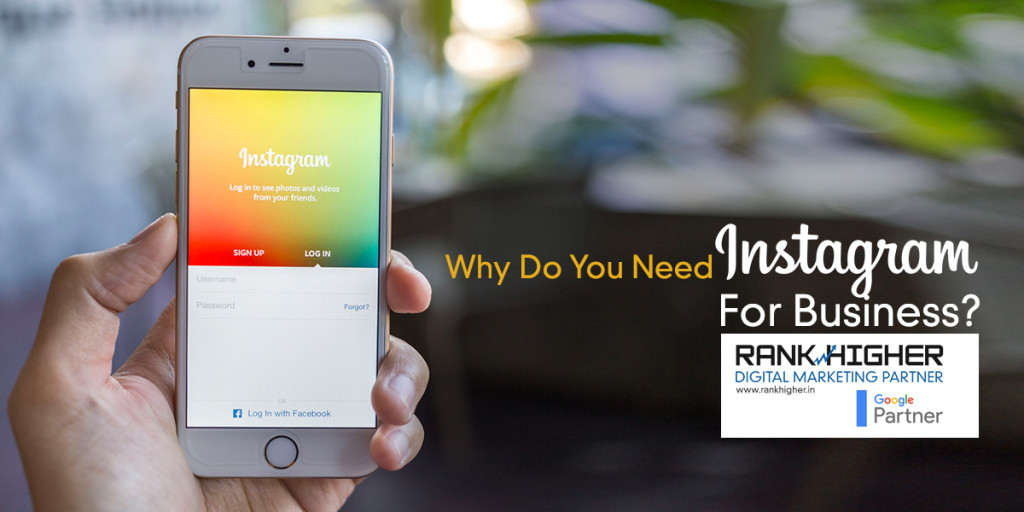Most local businesses are yet to use the power of online presence to increase their revenue. Your customers are out there looking for services/products that you are offering. Moreover, if you are an offline retail store, you need to be discoverable online to increase footfalls to your store. After all, driving customers through your website is cheaper than burning money on traditional offline channels, where the returns are not proportional to the investment. Recently, we were approached by a local interior design firm who wanted to optimize their website presence on Google search, so that they are able to drive more targeted visitors to their site, which will lead to more enquiries and potentially more sales. I wanted to show you the steps which we used to grow the traffic to their website by 5X. It can be replicated to all local businesses who are seriously trying to increase their customers and revenue.
How to grow website visitors for your local business:
Before we get down to the steps, let me tell you that these steps may not be applicable in its entirety for bigger businesses which are national and global in nature. For local businesses, competition is lesser and some of the activities listed here are specific to local only. For some local businesses, which are into more competitive niches, there will be some extra steps necessary.
- Find the right keywords for your business
 Keyword research is the ‘Holy Grail’ for any search engine optimization activity. It will help you find keywords which people are using to search for your products/services on Google. For example if you are in the business of ‘Repairing TV’ and you are serving customers only in Bangalore, then you should research keywords which are relevant to your business in the location of your choosing. For the Interior Design Firm, we researched the top 5 keywords with maximum search volume and with relatively low competition in Bangalore (as the firm is located and serves customers in Bangalore). By sorting the keywords based on search volumes, we were able to predict, that if we are able to bring the customer to top 5 in Google ranking, we will be able to achieve about 5% CTR. This will be a significant improvement as compared to their current situation. And since these keywords are specific to their target market, it will definitely bring in quality website visitors, who might be interested in their products/services.
Keyword research is the ‘Holy Grail’ for any search engine optimization activity. It will help you find keywords which people are using to search for your products/services on Google. For example if you are in the business of ‘Repairing TV’ and you are serving customers only in Bangalore, then you should research keywords which are relevant to your business in the location of your choosing. For the Interior Design Firm, we researched the top 5 keywords with maximum search volume and with relatively low competition in Bangalore (as the firm is located and serves customers in Bangalore). By sorting the keywords based on search volumes, we were able to predict, that if we are able to bring the customer to top 5 in Google ranking, we will be able to achieve about 5% CTR. This will be a significant improvement as compared to their current situation. And since these keywords are specific to their target market, it will definitely bring in quality website visitors, who might be interested in their products/services.
- On-Page Optimization
 A lot of businesses make fundamental errors when it comes to optimizing the pages with the right keywords. Either they go overboard and end up stuffing keywords, which end up looking ridiculous to a human reader, or they miss out on fundamental steps. For example, one business who is providing e-learning for competitive exams, told me, that they have done all on-page optimization. On analyzing further, we realized that they have just used the Exam Name as the keyword. For example, if they are providing e-learning for CAT, the keyword that they have used is CAT. This is a blunder which one can make. CAT by itself will be a very competitive keyword. Besides, someone searching for CAT, may not be searching for e-learning or preparation for CAT. Therefore, it is very important to understand the intent behind a keyword and then use the keyword for on-page optimization. Similarly, for the interior design firm, we cannot use the keyword, “interior design”. Because people searching for “interior design” maybe searching only to know about the field. They may not be the customers. For on-page optimization, focus on the following:
A lot of businesses make fundamental errors when it comes to optimizing the pages with the right keywords. Either they go overboard and end up stuffing keywords, which end up looking ridiculous to a human reader, or they miss out on fundamental steps. For example, one business who is providing e-learning for competitive exams, told me, that they have done all on-page optimization. On analyzing further, we realized that they have just used the Exam Name as the keyword. For example, if they are providing e-learning for CAT, the keyword that they have used is CAT. This is a blunder which one can make. CAT by itself will be a very competitive keyword. Besides, someone searching for CAT, may not be searching for e-learning or preparation for CAT. Therefore, it is very important to understand the intent behind a keyword and then use the keyword for on-page optimization. Similarly, for the interior design firm, we cannot use the keyword, “interior design”. Because people searching for “interior design” maybe searching only to know about the field. They may not be the customers. For on-page optimization, focus on the following:
- Title Tag – Use the Keyword in the Title tag. The maximum width is 512 pixels, which comes anywhere between 50-60 characters. If you are not a famous brand, you should use the title tag in the following manner: <Keyword><Company Name>. If you are a famous brand, you can flip it to <Company name> <Keyword>.
- Header Tags – Header tags follow a hierarchy and each subsequent header tag should extend the idea of the main header tag
For Example - <H1> Interior Designers in Bangalore </H1> <H2> About <Company> Interior Designers </H2> <H3> How to select the best interior designers </H3> A website should have only 1 H1 tag, but can have multiple H2 and H3 tags. Each H2 tag should extend the idea behind the H1 tag. Similarly, each H3 tag should extend the idea behind the H2 tag, under which it is placed.
- Content – Content sells. Whether to humans or to a search engine crawler, content is what determines whether your page is good or bad. Google tries to present the most relevant page to a user for a search term. Therefore Google’s algorithm is evolving more towards showing pages which it feels solves the user’s search intent. And content is the best method to convince the search engine crawler so that it ranks you for the search terms which you want to rank for. Most marketers prefer to right long form content, as Google’s algorithm looks at long content as one of the methods to identify if it is a good content. Ensure that the content has the keywords. However, do not spam your content with exact match keywords. It should read natural. Google is smart enough to understand if you have overused the keyword. Instead of overusing the exact match keyword, you can use variations so that your content reads naturally to a human reader. An ideal ratio is to keep the exact match keyword to about 1% or less of the total text.
Long form content is suitable for blogs but you may not be able to right long form content on your website’s homepage, as it might spoil the user experience. However, you should aim to have at least 300-500 words of text explaining your business on the homepage. You can craft it intelligently without spoiling user experience.
- Interlinking – Interlinking is a very effective method to ensure all your pages are getting link juice from other pages. For example, if you offer 2-3 services and have dedicated pages for each service, you may want to link them from your home page. You can use keywords as an anchor text to link to the relevant services page.
- Google+ profile
This is the dark horse for local SEO. If you are a local business, you should get your business listed on Google Maps. You can do so by going to plus.google.com and signing in using your Google account. You can go to Profile à Pages and Create a New Page. You will be given three choices. You can opt for services or storefront. Google will prompt you to give your address. Once you key in your address, you will see a pin pointing to your location on the Google Map. Once you submit it, it will inform that a Verification Pin will be sent to your business address. Approve that. You can now proceed to add Title, Description, Logo, phone number, working hours and days of your business to the page. Use your keywords in the title and description field. Within next 1-2 weeks you will get a Pin to your postal mail address. Key in the pin in your Verification area on the page and your listing will be verified.
- Local Schema
Local schema is a method to organize your website information in a way which is easily identifiable by Google crawlers. This helps Google to understand your local business information and categorize it better. You can read more about Local Schema here. Below is an example local schema which you can customize it for your own website: <div itemscope itemtype="http://schema.org/LocalBusiness"> <span itemprop="name">Interior Designers in Bangalore </span> <div itemprop="address" itemscope itemtype="http://schema.org/PostalAddress"> <span itemprop="streetAddress"> 16th Main, HAL 2nd Stage Indiranagar </span> <span itemprop="addressLocality">Bangalore</span>, <span itemprop="addressRegion">Karnataka</span> <span itemprop="postalCode">560008</span> </div> Phone: <span itemprop="telephone">+91 990000000</span> <link itemprop="sameAs" href="https://plus.google.com/1234567890123467/"> <link itemprop="hasMap" href="http://goo.gl/fyavkW"> <span itemprop="geo" itemscope itemtype="http://schema.org/GeoCoordinates"> <meta itemprop="latitude" content="12.966035" /> <meta itemprop="longitude" content="77.642108" /> <time itemprop="openingHours" datetime="Mo-Su 11:00-20:00">Monday through Sunday 11 AM - 8pm</time>. </span> </div> You can use this local schema on the Address/Contact Us section of your website. Ensure that your website and G+ page have consistent – NAME, ADDRESS, PHONE NUMBER
- Backlinking
 Backlinking is one of the most important elements in Google’s ranking algorithm. Although lot of discussions have taken place as to how link building is dead and how link earning is the way to go, at the end of the day backlink matters. The focus has shifted away from mindless backlinks from thousands and thousands of websites to relevant and quality backlinks. For example, if you study a website such as Bankbazaar.com, they have backlinks from banks directly. They have helped develop the policy comparison pages of different banks and have tied up with banks to provide the information. As a result the banks are linking directly to them. This linking is known as relevant and quality backlinking. Some of the other backlinking methods are listed below
Backlinking is one of the most important elements in Google’s ranking algorithm. Although lot of discussions have taken place as to how link building is dead and how link earning is the way to go, at the end of the day backlink matters. The focus has shifted away from mindless backlinks from thousands and thousands of websites to relevant and quality backlinks. For example, if you study a website such as Bankbazaar.com, they have backlinks from banks directly. They have helped develop the policy comparison pages of different banks and have tied up with banks to provide the information. As a result the banks are linking directly to them. This linking is known as relevant and quality backlinking. Some of the other backlinking methods are listed below
- Social Bookmarking
There are several social bookmarking sites out there, such as Digg, Stumbleupon, Rediit etc. By bookmarking your pages, you can achieve 2 things:
- Get a link from the bookmarking page to your site
- Make your content discoverable to other people. If your content is interesting, users will bookmark and share your content which will further increase backlinks to your website.
- Social Shares
Google is giving lot of importance to social shares as a proof of quality of a website. More the social shares, better it is. However, the exact relationship between social shares and SEO is not yet known. However, they tend to have a strong correlation. You should have your presence on popular platforms such as Facebook, G+, Twitter, Pinterest etc. You should produce content regularly and get more users to engage with your content.
- Blogs on web 2.0 sites
You can build a community by sharing interesting web 2.0 blogs such as Tumblr.
- Guest Blogging
Guest Blogging done right can not only help get good backlinks to your site, but also can get you tons of traffic. You should take the time to research good blogs in your industry and try to connect to their editor to check if they allow guest blogs. You have to create great content on their blogs so that they will be happy to publish.
Results
Here is a snapshot of what we achieved:  The traffic has grown by 5X. The website which was not ranking in top 100 has now come to page 1, and this was achieved in exactly 4 weeks.
The traffic has grown by 5X. The website which was not ranking in top 100 has now come to page 1, and this was achieved in exactly 4 weeks.





